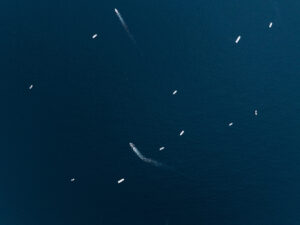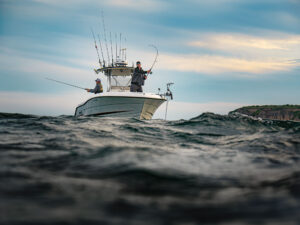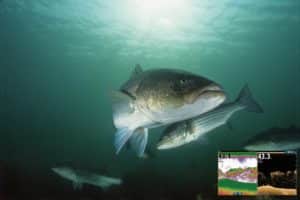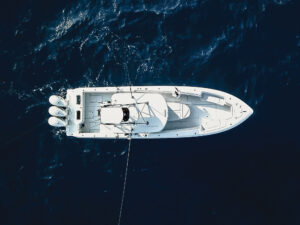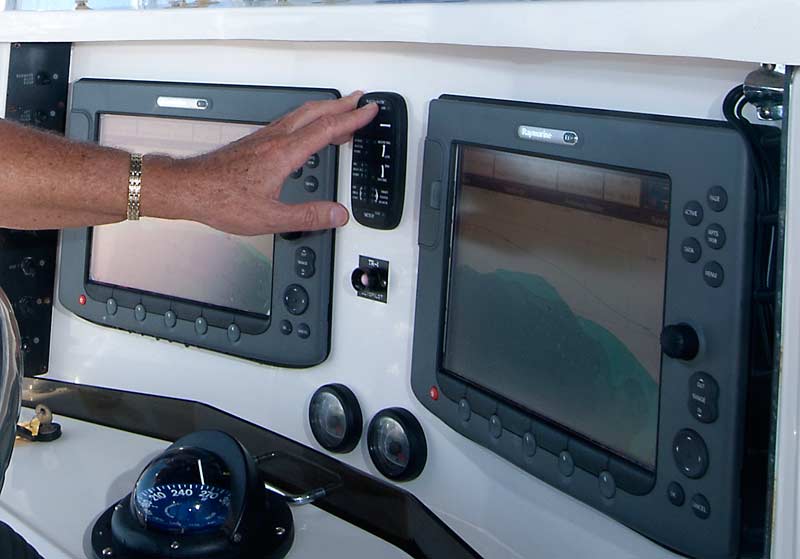
Autopilot trolling
Autopilots can become great electronic tools for trolling anglers. They simulate another pair of hands on the water that can free up a captain to make changes to a spread, build a new rig or even just watch the water. Many feature intricate, pre-programmed trolling patterns for set-and-forget steering. (Note: For safety, always maintain a lookout.)
I asked four captains, sponsored by top electronics companies, to share some tips on how they use their autopilots for trolling. Here are their suggestions, which also include a few generic tips.
- Capt. Terry Nugent, Riptide Charters
- Buzzards Bay, Massachusetts
- Autopilot: Raymarine Smart Pilot for Mercury Verado
- Species: Bluefin and yellowfin tuna
Tip 1: I always troll using my autopilot. I steer with the +/- buttons rather than the steering wheel. That allows me to run without a mate and still tend to the spread, without worrying the boat is going to turn unexpectedly and cross up my spread. It also lets me assist an angler or gaff a fish. I also use the zigzag pattern to keep the spread moving around and not just dragging in a straight line. Most of my strikes come on the turns, when the outside of the spread speeds up and the inside slows down.
Tip 2: When we get a knockdown, the first thing I do is drop a waypoint. When we land the fish, I go back to that spot and set the autopilot to run either the cloverleaf or figure-8 pattern, with the waypoint as the center of the pattern. The boat automatically pounds the numbers over and over where we just got bit. While the boat’s running the pattern, I can get the spread back out, rig another bait or dress the fish without losing any fishing time or worrying I’m not on my numbers.
- Capt. George Mitchell, Fabulous Fishing Adventures, Yamaha Saltwater Fishing School, SKA Pro Tour
- Jupiter, Florida
- 305-321-8700
- Autopilot: Furuno NavPilot 711 with Fantum Feedback software (connected via NMEA 2000 to NavNet TZTouch)
- Species: Kingfish, sailfish
Tip 1 (kings): Autopilots are great fish tools, but better when interfaced with your plotter. I fish competitively for kingfish a dozen or more times a year, but my team is somewhat small. My autopilot brings another hand into the equation.
When we arrive on location I’ll slip one of the three Yamaha F300s into gear, aim the boat toward the red zone, then go to work deploying baits. Usually we’re fishing a specific area — sometimes a wreck or reef — but often visible structure like an oil rig or tower. Depending on current and wind I might use one, two, or all three engines. The autopilot keeps me headed straight, which means a better presentation.
Tip 2 (kings): On the east coast of Florida, my motto is: The only time you can have too many baits in the water is when the bonitos show up. For me, on tournament day, it’s all about speed — getting to the red zone, and then getting the baits in the water fast. That’s where my autopilot shines.
As soon as we get to the spot, I start the pilot, drop to one motor, and begin deploying our drift baits. A lot of times, we have as many as six baits on the windward side of the boat. We deploy long, large baits under a balloon to help keep them in check; mid-water baits get a variety of breakaway weights to help keep them down and keep them from tangling.
Next, we deploy our kites. Once the kites are up and flying, we go into standby mode and begin our drift. The pilot acts as another deckhand, easing the burden on the other anglers, but also helping to give my baits better presentation.
Tip 1 (sailfish): On Florida’s east coast, we look for a color change or current edge. Ninety percent of the time, that break will run north/south. We try to keep our baits right at the change, which requires either a helmsman or an autopilot.
For instance, last year, when we were fishing a sailfish tournament out of Miami, the wind was blowing SE about 15 knots, the current was north at about 2 1/2 knots, and there was a hard blue-green edge in 180 feet right off Government Cut. We were able to put two of the three F300s in gear, point the boat south, deploy the kites on either side of the edge, but get this — we were moving north. The combination of the kites and the current made the boat lose ground, however the autopilot kept us headed in the right direction.
Tip 2 (sailfish): In the Florida Keys, the bait of choice for sails is a live ballyhoo. ‘Hoos are easy to catch and keep, but the challenge can be the presentation. Ballyhoo work well but only if not stressed.
We deploy the long rigger first, usually the downwind side, then the opposite rigger bait, a little shorter. Next, the short riggers, then a down rod and lastly a prop-wash bait. The whole time we deploy baits, we use the autopilot. It doesn’t always work as easily as it sounds, but when you incorporate your boat’s ability to use one, two, or three engines and vary the RPM, you can usually get a great presentation.
- Capt. Bill Platt, SKA Pro Tour, Team Papotanic
- Galveston, Texas
- Autopilot: Garmin GHP10
- Species: Multiple
Tip 1: I use something called the Search pattern when looking for fish and for new bottom structure. The search pattern steers the boat in increasingly larger circles outward from the active waypoint, forming a spiral pattern. When you begin the search pattern, the autopilot drives the boat to the active waypoint and begins the pattern.
Tip 2: When I set up to troll a long distance on a rip or a color change, I use my autopilot. I also have a remote so I can drive from the cockpit or anywhere on the boat that makes thing easy.
- Capt. Mark Maus, SKA Pro Tour
- Sarasota, Florida
- Autopilot: Simrad AP24
- Species: Multiple
Tip 1: The most impressive feature in the autopilot would be the Depth Contour Tracking because you can hunt a desired species that hangs at a certain depth. All you do is network your depth sounder to the autopilot, and then tell the pilot which side of the vessel is the shallow side.
Then, using Cross Course Angle, you can program the pilot to move the vessel on whatever angle you’d like to cross back and forth over the desired depth. That sets your frequency of oscillation; setting the gain level creates the amplitude of the oscillation. With this input, the pilot steers the vessel in an S curve around the desired depth, making the baits look like they’re moving naturally rather than simply a straight line.
Tip 2: Turn patterns are another way an autopilot can help. I can program the Simrad to do an S pattern, zigzag (setting the time on each leg before the zig or zag), spiral (either in or out and you can set the degrees per second of the turn), square (you can set the time on the leg before you make the 90-degree turn), or continuous turn (you set the degrees-per-second rate of the turn). These patterns can help setup a search area or just provide a pattern to drag baits.

